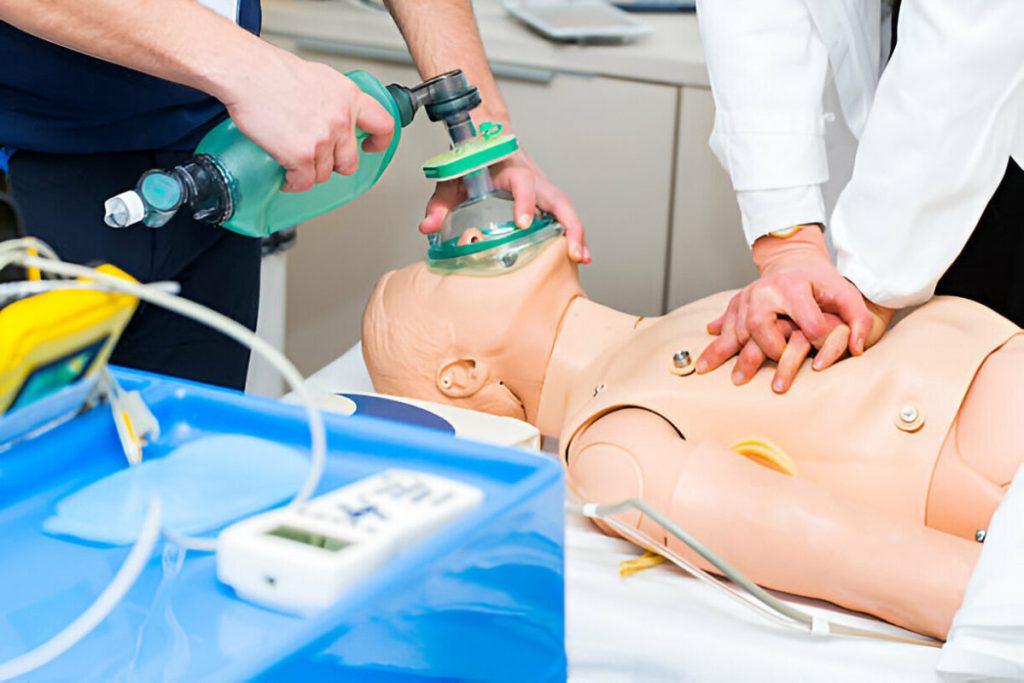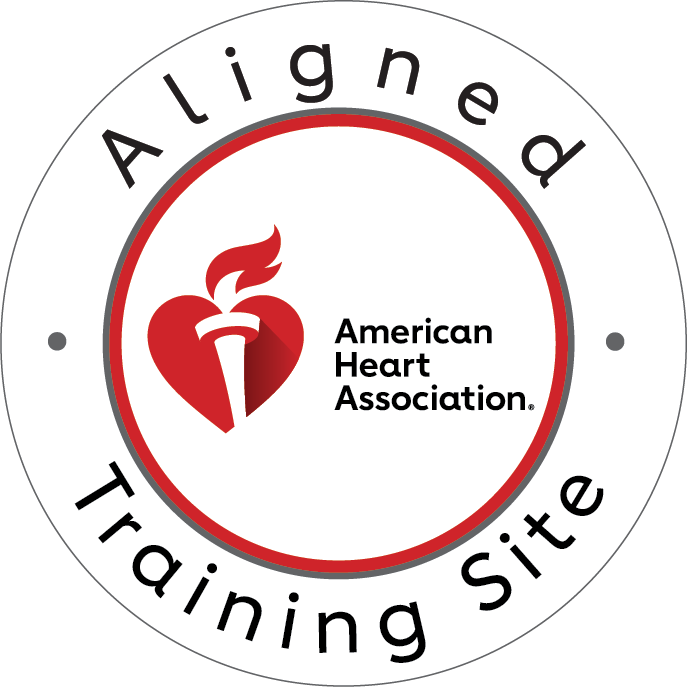Introduction: The Critical Importance of Early CPR
When cardiac arrest strikes, every second counts. Early CPR using Basic Life Support (BLS) techniques can mean the difference between life and death. For every minute that passes without CPR, a victim’s chance of survival decreases by 7-10%. Understanding how to perform early CPR through proper BLS techniques empowers ordinary people to become lifesavers in emergencies.
Early CPR: BLS techniques form the foundation of emergency cardiac care, providing essential blood circulation and oxygen delivery to vital organs when the heart stops beating effectively. These life-saving skills are not just for healthcare professionals – they’re essential knowledge that everyone should possess.
Understanding BLS and Early CPR Fundamentals
Basic Life Support represents a systematic approach to emergency cardiac care that focuses on maintaining airway patency, supporting breathing, and ensuring adequate circulation. Early CPR implementation using BLS techniques creates artificial circulation, buying precious time until advanced medical help arrives.
The cornerstone of early CPR lies in high-quality chest compressions. When performed correctly, these compressions can maintain approximately 25-30% of normal blood flow to the brain and heart. This circulation proves sufficient to keep vital organs viable during the critical minutes following cardiac arrest.
Modern BLS protocols emphasize the importance of continuous, uninterrupted chest compressions. Research demonstrates that even brief interruptions in compressions significantly reduce the effectiveness of early CPR efforts. Therefore, BLS techniques prioritize minimizing hands-off time while maintaining compression quality.
How to Perform Early CPR: Step-by-Step BLS Protocol
Scene Safety and Initial Assessment
Before initiating early CPR, always ensure scene safety. Check for environmental hazards, then assess the victim’s responsiveness by tapping their shoulders firmly while shouting, “Are you okay?” If the person doesn’t respond and isn’t breathing normally, immediately call 911 and request an AED if available.
Proper Positioning for Early CPR
Position the victim on a firm, flat surface with their face up. Kneel beside their chest and tilt their head back slightly by lifting their chin. This positioning optimizes airway alignment and provides the best access for effective chest compressions.
Hand Placement and Compression Technique
Place the heel of one hand on the center of the victim’s chest, between the nipples on the lower half of the breastbone. Position your second hand on top, interlacing your fingers. Keep your arms straight and shoulders directly over your hands.
Push hard and fast, compressing the chest at least 2 inches deep for adults, allowing complete chest recoil between compressions. Maintain a compression rate of 100-120 compressions per minute. The rhythm should be steady and consistent, similar to the beat of “Stayin’ Alive” by the Bee Gees.
Rescue Breathing Integration
After 30 compressions, provide 2 rescue breaths. Tilt the head back, lift the chin, pinch the nose closed, and create a seal over the victim’s mouth. Give each breath over 1 second, watching for visible chest rise. Avoid excessive ventilation, which can impede circulation.
First Steps in BLS CPR: The Chain of Survival
The first steps in BLS CPR follow a systematic approach designed to maximize survival chances. This process begins with recognizing cardiac arrest and immediately activating emergency medical services.
Step 1: Recognition and Activation. Quickly assess consciousness and breathing. If the victim is unresponsive and not breathing normally, this constitutes cardiac arrest requiring immediate CPR.
Step 2: Early CPR Initiation. Begin chest compressions immediately. Don’t waste time checking for a pulse unless you’re trained to do so quickly and accurately. Early CPR should start within 10 seconds of recognizing cardiac arrest.
Step 3: Rapid Defibrillation Request an AED immediately. Early defibrillation, combined with early CPR using BLS techniques, provides the best chance for successful resuscitation.
Step 4: Advanced Life Support. Continue BLS until emergency medical services arrive and take over advanced care.
CPR Cycles in BLS: Understanding the 30:2 Ratio
BLS protocols specify performing CPR in cycles of 30 chest compressions followed by 2 rescue breaths. This 30:2 ratio optimizes the balance between circulation and oxygenation while minimizing interruptions to chest compressions.
Each complete cycle takes approximately 2 minutes to perform. After 5 cycles (about 2 minutes), briefly reassess the victim if an AED becomes available or if the person shows obvious signs of life. Otherwise, continue CPR cycles without interruption.
The rationale behind the 30:2 ratio stems from extensive research showing that chest compressions generate the most benefit in early CPR. The brief pause for rescue breaths provides necessary oxygenation without significantly compromising circulation.
Quality Indicators for Effective Early CPR
Effective early CPR requires attention to several quality indicators that ensure maximum benefit from BLS techniques:
Compression Depth: Push at least 2 inches deep for adults, but avoid excessive depth exceeding 2.4 inches, which can cause unnecessary injury.
Compression Rate: Maintain 100-120 compressions per minute. Too slow reduces circulation; too fast prevents adequate filling between compressions.
Complete Recoil: Allow complete chest recoil between compressions. Leaning on the chest impedes venous return and reduces compression effectiveness.
Minimized Interruptions: Limit hands-off time to less than 10 seconds. Every interruption decreases survival chances.
Proper Hand Position: Maintain correct hand placement on the lower half of the breastbone to maximize compression effectiveness while minimizing injury risk.
Special Considerations in Early CPR: BLS Techniques
Certain situations require modifications to standard BLS techniques while maintaining the core principles of early CPR. Pregnant women beyond 20 weeks of gestation need manual displacement of the uterus or positioning with a wedge under the right hip to prevent aortic compression.
For drowning victims, provide 2 initial rescue breaths before beginning chest compressions, as hypoxia typically precedes cardiac arrest in these cases. However, if you’re untrained in rescue breathing, focus on continuous chest compressions rather than attempting mouth-to-mouth ventilation.
In cases involving suspected spinal injury, minimize head and neck movement while still ensuring adequate airway opening for effective ventilation during early CPR.
Building Confidence Through Proper Training
While knowing the theory behind early CPR and BLS techniques is important, hands-on practice under expert guidance builds the confidence and muscle memory necessary for effective emergency response. Regular training ensures that these life-saving skills become second nature during high-stress situations.
Quality CPR training programs provide realistic practice scenarios, allowing participants to develop proper technique while learning to manage the emotional stress of emergencies. This preparation proves invaluable when facing real cardiac emergencies.
Conclusion: Empowering Communities Through Early CPR Education
Early CPR using proper BLS techniques represents one of the most impactful skills any individual can learn. These techniques bridge the critical gap between cardiac arrest onset and professional medical intervention, often determining whether victims survive with full neurological recovery.
The confidence to act decisively during cardiac emergencies comes through comprehensive training and regular skill reinforcement. By mastering early CPR and BLS techniques, individuals become valuable community assets capable of saving lives when seconds count.
Understanding that cardiac arrest can happen anywhere, anytime, to anyone underscores the importance of widespread CPR education. When more people possess these essential skills, communities become safer, and survival rates improve significantly.
Take Action: Get Certified Today
Don’t wait for an emergency to wish you knew life-saving skills. CPR Memphis is an American Heart Association training site offering comprehensive CPR certification in Memphis and BLS certification in Memphis. Our stress-free, hands-on classes provide the practical experience you need to confidently respond during cardiac emergencies.
Whether you need initial certification or renewal in BLS for Healthcare Providers, ACLS, PALS, or CPR and First Aid, CPR Memphis delivers the Best CPR in Memphis through expert instruction and realistic practice scenarios. Contact us today to schedule your certification class and join the community of trained responders ready to save lives with early CPR and BLS techniques.





